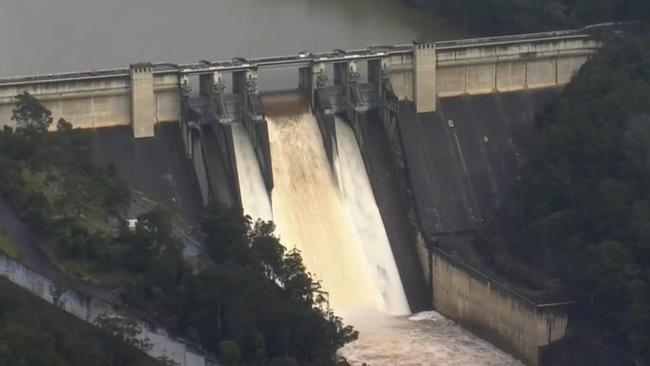
Warragamba Dam spill risk
Warragamba Dam Spill Risk Understanding the Concerns and Implications for NSE
Warragamba Dam, a critical piece of infrastructure providing water security to millions in New South Wales, has recently come under intense scrutiny due to rising concerns about spill risks amid unusual weather patterns and evolving climate dynamics. As one of Australia’s largest domestic water reservoirs, the dam plays an essential role not only in water supply but also in flood management and environmental balance in the Sydney basin and surrounding regions. The current discussion about spill risk at Warragamba Dam has raised important questions about how prepared the dam and local communities are for potential high inflow events, as well as the broader challenges of managing such vital infrastructure in a changing climate.
The spill risk essentially refers to the possibility that the dam’s water levels could rise to a point where excess water must be released, either naturally via spillways or through controlled releases, to maintain structural safety. Warragamba Dam’s catchment area has been experiencing heavier and more frequent rainfall events in recent years, influenced partly by climate variability and extreme weather phenomena. These factors have increased the inflow into the dam, pushing its capacity toward critical levels during peak rainfall seasons. While the dam was engineered with spillways to safely discharge excess water, the scale and speed of rising water levels can pose risks downstream, including flooding, erosion, and damage to communities and ecosystems.
One of the key challenges in managing Warragamba Dam’s spill risk lies in balancing water storage needs with flood mitigation objectives. The dam must maintain enough water to supply Sydney’s population, support agricultural activities, and sustain ecological flows, while also ensuring that it does not hold back water at levels that could exacerbate flood impacts if a major storm hits. This balancing act requires precise hydrological forecasting, continuous monitoring, and coordinated operational decisions. However, unpredictable weather patterns and the increasing intensity of storms complicate these tasks. In particular, extreme rainfall events can cause rapid water level rises that exceed forecast models, forcing emergency releases that may catch downstream communities off guard.
The potential downstream impacts of dam spills are a major concern for residents, local councils, and emergency services. Warragamba Dam sits above the Hawkesbury Nepean River system, which flows through densely populated areas with a history of flood vulnerability. Controlled releases or overflow spills can lead to sudden increases in river flow, posing risks to low lying neighborhoods, infrastructure such as roads and bridges, and critical services. Moreover, floodwaters can cause significant environmental damage, including sediment displacement, water quality degradation, and harm to aquatic habitats. Local authorities have emphasized the importance of effective communication and early warning systems to minimize harm when spill events occur.
In response to these risks, the NSE government and water authorities have implemented several measures to enhance spill management and overall dam safety. Advanced hydrological monitoring systems provide real time data on rainfall, river flow, and dam water levels, enabling more accurate predictions and timely decision making. Emergency action plans have been updated to include clear protocols for spill scenarios, with coordination among state agencies, local councils, and emergency responders. Furthermore, community engagement programs have been strengthened to educate residents about flood risks, preparedness steps, and the importance of staying alert to official warnings.
One significant development in addressing Warragamba Dam’s spill risk has been discussions about potential structural modifications to the dam itself. Over the past decade, proposals have surfaced to raise the dam wall by several meters, a measure aimed at increasing storage capacity and reducing uncontrolled spill frequency. While such an upgrade could enhance water security, it also raises concerns about potentially increasing flood risk downstream during extreme inflow events, due to the larger volume of stored water released during spill. These competing interests have sparked debates involving engineers, environmentalists, government planners, and affected communities, all striving to find solutions that optimize safety, sustainability, and resource management.
Climate change adds another layer of complexity to managing Warragamba Dam’s spill risk. Projections suggest that southeastern Australia may experience more intense rainfall events interspersed with longer dry spells. This variability means that water managers must prepare for both drought conditions and sudden flood risks. Traditional approaches based on historical rainfall and inflow patterns may no longer suffice, necessitating the incorporation of climate adaptive strategies. These include scenario planning, investment in flexible infrastructure, and the integration of environmental considerations that ensure river systems can better absorb and recover from flood events.
The conversation around Warragamba Dam’s spill risk highlights the critical importance of a holistic, multidisciplinary approach to water infrastructure management. Engineering excellence must be complemented by ecological awareness, community involvement, and robust governance frameworks. It is clear that protecting communities and ecosystems downstream requires not just physical infrastructure, but also transparent decision making processes and ongoing dialogue with all stakeholders. As the NSE government continues to explore options for enhancing dam safety and resilience, maintaining public trust through openness and responsiveness will be essential.
In conclusion, Warragamba Dam’s spill risk is a multifaceted challenge shaped by environmental, technical, and social factors. Rising inflows, evolving climate patterns, and population growth downstream all contribute to the complexity of managing this vital asset. While the risk of uncontrolled spills cannot be entirely eliminated, advances in monitoring, emergency planning, and infrastructure upgrades offer pathways to mitigate impacts. The key will be fostering adaptive management practices that remain responsive to new information and changing conditions, ensuring Warragamba Dam continues to serve its critical role safely and sustainably for generations to come.











